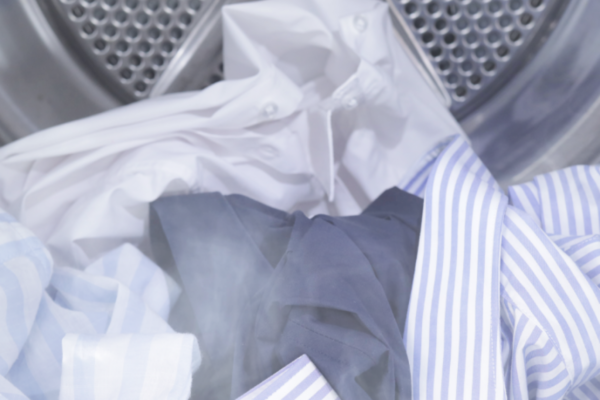
After the programme has ended, warm laundry tends to feel damper than it actually is. Take out the load, and spread the laundry to let it cool off. If your laundry is still damp, the simple checks listed below can help you to resolve the problem.
Select the right drying cycle
Ensure that you have selected the right cycle for the load you would like to dry and keep in mind that different clothing materials also dry differently. Consult your instruction manual to find out more about the programmes available and information on which items a programme is suitable for. You may also consider adjusting the drying time or the degree of dryness. Please note that this will increase the drying time but the temperature will remain the same. Do also note that if the programme has been delayed by setting "Finished in", it will start at a later point.
Clean the fluff filter
If the drying is taking a long time, the appliances fluff filter might be clogged. A clean fluff filter improves the appliances performance, and as fluff can build up easily, we recommend cleaning this key part after every drying cycle.
Adjust the load
Avoid overloading the dryer and reposition large items to ensure even drying. Consult your instruction manual for more information on maximum load weight per programme.
Deactivate the child lock
If the programme does not start, check that the door is fully closed and that the child lock has been deactivated.
Check that the moisture sensor is clean
The sensor is a key component to any modern tumble dryer, which helps you to control the time your clothes spend inside the dryer. It will detect if clothes are wet and help prevent wasting energy and time by stopping the programme once the clothes are dry.
Unfortunately, after long periods of usage, the moisture sensor may become covered by a fine layer of limescale or residues of detergents and care products. Such residues must be removed regularly as the sensor function and drying result may be impaired.
To clean the sensor, open the appliance door and thoroughly clean the area of the moisture sensor with a coarse sponge (the sensor itself is located in the door area). Do not use abrasives and steel wool as they can damage the sensor.
If the issue persists, we advise against attempting repairs yourself. Instead, book a repair with one of our highly trained and qualified Bosch engineers.
